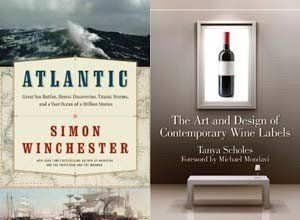
"AS ALWAYS, JULIA: The Letters of Julia Child and Avis DeVoto, edited by Joan Reardon
The New York Times
Now comes "As Always, Julia: The Letters of Julia Child and Avis DeVoto," a book for completists, the sort of pathetic losers who'd line up to buy a book of Child's grocery lists, were it available. Well -- full miserable disclosure -- I am exactly that type of pathetic loser. So I picked up "As Always, Julia" with a modest tingle of anticipation. A good book of letters beats an almost-good novel any day.
"FRASER'S PENGUINS: A Journey to the Future in Antarctica" by Fen Montaigne
The New York Times
But this is no straightforward work of natural history with Fraser as heroic guide. It's a morality tale, in which Fraser plays an unsociable Cassandra who's entrusted his tidings to a sympathetic messenger. Luckily for readers, Montaigne has wrapped his portrait of a place on the brink of oblivion inside a penguin love fest.
"THE MASTER SWITCH: The Rise and Fall of Information Empires" by Tim Wu
The New York Times
The story covers the history of phones, radio, television, movies and, finally, the Internet. All of these businesses are susceptible to the cycle because all depend on networks, whether they're composed of cables in the ground or movie theaters around the country. Once a company starts building such a network or gaining control over one, it begins slouching toward monopoly. If the government is not already deeply involved in the business by then (and it usually is), it soon will be.
"Atlantic: Great Sea Battles, Heroic Discoveries, Titanic Storms, and a Vast Ocean of a Million Stories" by Simon Winchester
The Los Angeles Times
One of the great joys of reading a Simon Winchester book is the inadvertent discovery of minutiae that is utterly useless, but also utterly fascinating. For example: The Rocky Mountain Triple Divide Peak in northern Montana "is the hyrdrologic apex of the North American continent," and the extreme western reach of the Atlantic Ocean.
"Tablet & Pen: Literary Landscapes From the Modern Middle East" edited by Reza Aslan
The Los Angeles Times
Aslan, who teaches creative writing at UC Riverside, brings a historian's vision to "Tablet & Pen," arranging the collection in three chronological sections, and geographically within them. The idea, he tells us, is to create "not an anthology to be tasted in disparate bits but rather a single sustained narrative to be consumed as a whole." As a starting point, he picks the Lebanese American Khalil Gibran, perhaps the father of contemporary Arab literature, and a name not unknown to Western readers, many of whom have at least a passing acquaintance with the philosophical essays of Gibran's "The Prophet."
"Beyond the Crash: Overcoming The First Crisis of Globalization" by Gordon Brown
Slate
Typically, what makes political memoirs of interest are the tidbits of secrets that are revealed. This book is different. Brown is a politician and a thinker; his book is gripping because his matter-of-fact recounting of the early months of the crisis conveys the dilemmas and angst of policymakers as they tried to handle the biggest economic drama in decades. Readers hoping for a tell-all book filled with personality clashes or revealing Brown's side of the story of his relationship with Tony Blair and other members of New Labour will be disappointed. This is a book about ideas and policies and Brown steers clear of the lively gossip and score-settling that makes politicians' memoirs so entertaining.
"20 Under 40: Stories From The New Yorker" edited by Deborah Treisman
San Francisco Gate
But to put together a good collection of stories is its own justification, and this is a good and varied collection. There are stories about anxious mothers and absent fathers, Jesus freaks and fishermen, the cheating and the cheated on - and a number of moving stories about children badly treated by adults.
"The Art and Design of Contemporary Wine Labels" by Tanya Scholes
The Wall Street Journal
Very little about fine wine is the same as it was a generation ago. The revolution has engulfed every aspect of the production, sale and consumption of wine--from screwcaps and stemless wineglasses to the carefully controlled photo-chemistry that has made Argentine Malbec a star. One entertaining change: the use of adventurous graphic design for wine labels.